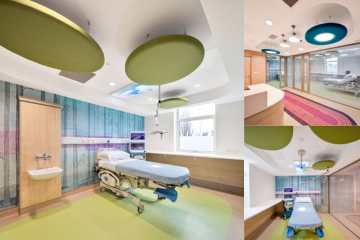Induction of Labour
In CUMH Induction of Labour can occur in a few locations, the Induction Room in the Delivery Suite or on the Antenatal ward.
As your labour becomes established you will be transferred to a delivery suite room. Induction involves starting labour artificially. Labour may be induced if there is some risk to you or your baby’s health or if you are overdue. Induction of labour can take up to 24 hours: the longest part is getting the cervix to soften and open to about 2 cm. If your labour is induced, your contractions and your baby’s heartbeat will need to be continuously monitored.

There are three methods used in CUMH to induce labour. Some women might need just one method, while others might need all three. You will be given an information leaflet in the clinic once the decision is made to induce your labour and the doctor will tell you about the possible methods needed to induce your labour when you arrive in the hospital.
Prostin Gel
Prostin is a hormone used to soften and shorten the cervix, sometimes referred to as ‘ripening the cervix’. Before the prostin gel is inserted into your vagina, the midwife will carry out some assessments and observations on you and your baby, including monitoring of your baby’s heartbeat for 20 minutes (CTG). Once the prostin is inserted, you will be asked to stay in bed for one hour to help the gel to work. During this hour, continuous monitoring of the baby’s heartbeat will continue. Provided the CTG is normal, the monitoring is discontinued after the hour and you are encouraged to walk about and to eat light food if you wish. At this stage, you might have pains like period cramps. Some women go into established labour following this method of induction. However, some women may require a second or third prostin gel as part of the induction process. You will be reassessed every 6 hours to ascertain if you require further prostin gel if labour hasn’t started. Very occasionally, the prostin gel may cause your womb to contract too much and this in turn may affect the baby’s heartbeat. If this happens, you will be asked to lie on your left side and you may be given a drug to help your womb relax.
Artificial Rupture of the Membranes (ARM)
The second method of induction is to artificially break the membranes – the bag of water surrounding the baby. The doctor will carry out a vaginal examination and uses a specialized tool called an ‘amnihook’ to break the waters. This is a painless procedure for you and your baby and is like bursting a fluid-filled balloon. Once the waters break, fluid called ‘liquor’ will drain throughout your labour. Sometimes, this method of induction is enough to start labour.
Syntocinon
The third method of induction is by means of a syntocinon drip. This is explained in the next section - acceleration of labour.
Acceleration of Labour
If Your labour is slow, your doctor or midwife may recommend accelerating your labour. This is done by breaking your waters artificially (ARM) and/or starting you on a drip with a hormone called syntocinon. Syntocinon can only be commenced once your waters are broken. This hormone will encourage contractions and the dose of syntocinon is altered according to your contractions. Once the drip is started, it usually continues until the birth of your baby. If the syntocinon drip is used, the frequency and length of your contractions and your baby's heartbeat are monitored continuously. A known side effect of this drip is that the contractions can become too frequent or too long. This may affect your baby's heart rate. If this happens, you will be asked to lie on your left side, the rate of the drip will be reduced or turned off by your midwife and you will be reviewed by the doctor. The contractions will return to normal very quickly once the drip is stopped.

